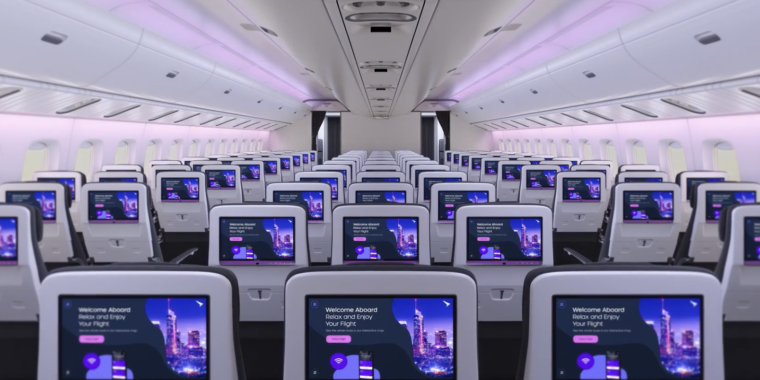Panasonic Avionics Astrova In-Flight Entertainment Systems
Flying on commercial airlines has become a less enjoyable experience over time, but technological advancements are set to enhance one specific aspect—in-flight entertainment. Panasonic Avionics is introducing its Astrova in-flight entertainment systems on select commercial flights for various airlines. These systems are set to revolutionize the traditional in-flight movie viewing experience by offering 4K HDR TVs and other innovative features directly on the back of seats.
Current State of In-Flight Entertainment
When you look at most commercial airlines today, the in-flight entertainment screens are often small and of subpar quality. The standard dynamic range LCD screens embedded in the seats lack good contrast, have poor viewing angles, and fail to deliver an optimal viewing experience, especially when overhead lights are on.
These limitations have led many travelers, including myself, to bring their own devices for entertainment during flights. While some opt for personal tablets, others, like myself, have sought alternatives such as the Apple Vision Pro headset to enhance their viewing experience.
The Astrova Upgrade
Enter Panasonic’s Astrova in-flight entertainment system, promising a significant improvement over existing setups. The OLED screens boast 4K resolution, HDR+ support, and two USB-C charging ports capable of delivering up to 100W for charging. Additionally, Bluetooth connectivity enables the use of wireless headphones like AirPods and Sony WH-1000, eliminating the need for adapters.
Innovations extend beyond the screens. Panasonic has incorporated colored LED lighting systems to mitigate the need for bright overhead cabin lights, ensuring a more immersive viewing experience. The Astrova screens range from 13 to 42 inches, catering to varying needs and preferences.
Rollout and Implementation
Beginning this year, Icelandair and Qantas are among the airlines spearheading the adoption of Astrova systems. Icelandair’s new Airbus A321neo LR aircraft will feature 16-inch screens in business class and 13-inch screens in economy. Qantas, on the other hand, plans to integrate Astrova into its A330-200 fleet and newly acquired A350-1000 aircraft, focusing on long-haul routes between Australia and Europe or the United States.
Last summer, United Airlines revealed plans to introduce these advanced systems on its longer international flights in 2025, with domestic flights following suit. While these in-flight screens may not rival top-of-the-line OLED TVs, they represent a marked improvement over existing options and a step in the right direction for the aviation industry.
As airlines strive to enhance passenger comfort and in-flight experiences, the implementation of Astrova systems signifies a significant leap forward in in-flight entertainment technology.
Image/Photo credit: source url





